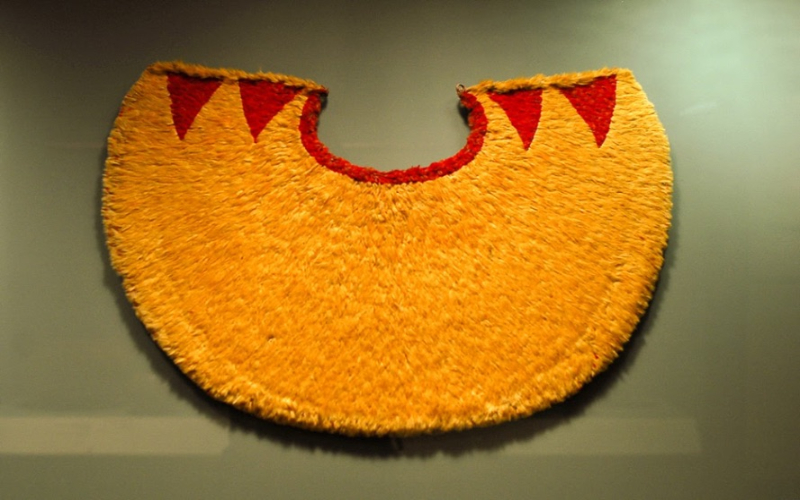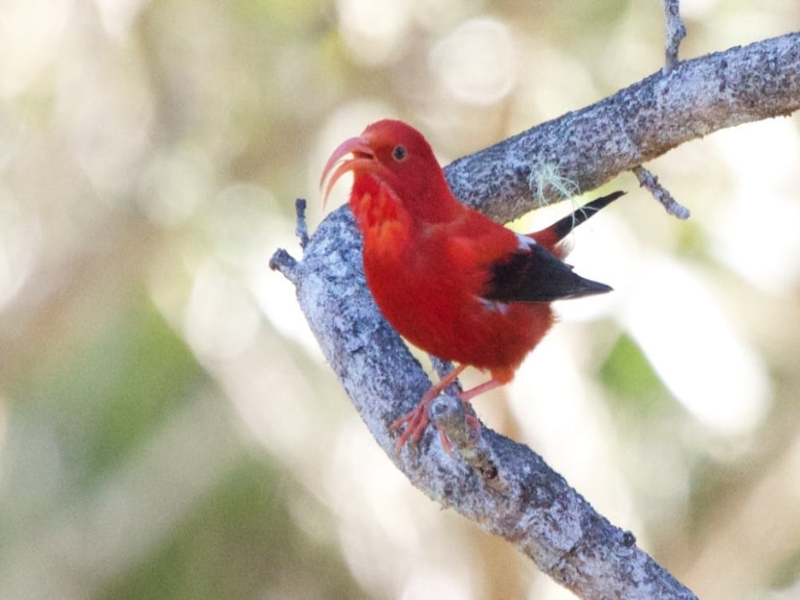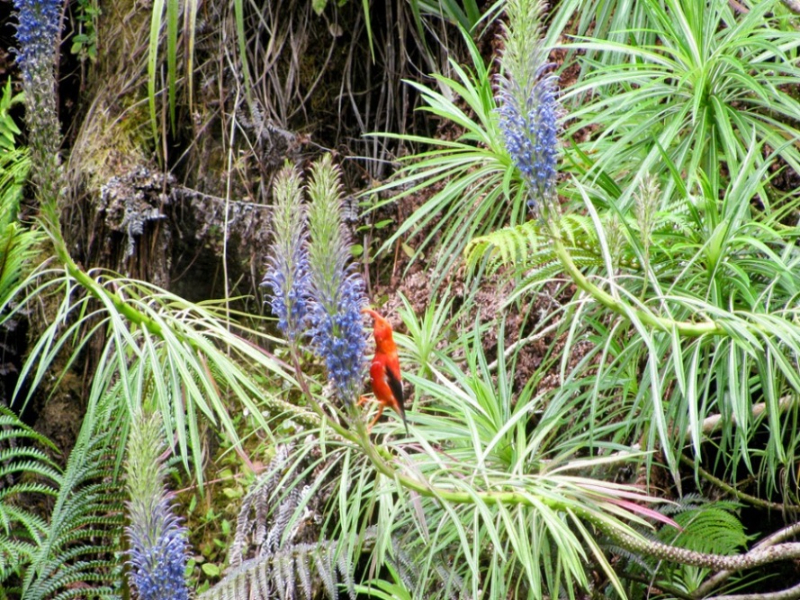
If you plan to visit one of our Honolulu Museums that specialize in Native Hawaiian art and culture, you may come across a display case with a feather cape, or ʻahu ʻula. These historical artifacts are huge, each with a unique color pattern – usually red, yellow and black – and every inch is thickly covered with tiny feathers, boldly colored with a soft, rich texture to catch the light. They were worn only by the aliʻi (chiefs) and acclaimed warriors of the Hawaiian islands, along with the mahiole (feather helmets). What makes these capes even more precious and rare is the method of collecting these fine feathers.

One of the indigienous birds, whose feathers were used for these beautiful capes, is the iʻiwi. The i’iwi bird is a honey creeper that lives in mountain forests. Their feathers are a vibrant, rich red color, and their beaks are long and curved to reach down into tubular flowers to drink the nectar. To read a detailed profile by the American Bird Conservancy on the iʻiwi birds unique characteristics and modern day challenges, click here.

To extract feathers for the ʻahu ʻula, bird trappers would go up into the mountains and set glue on a branch where an i’iwi was likely to perch. Returning to find the birds, the trappers would remove only a few bright feathers from each bird, and then release them back into the wild. This respect for the birds’ lives is an expression of the Hawaiian values of taking only what is needed and loving and honoring the land and all life. Imagine how many birds contributed a few of their feathers to create a single magnificent cape!

